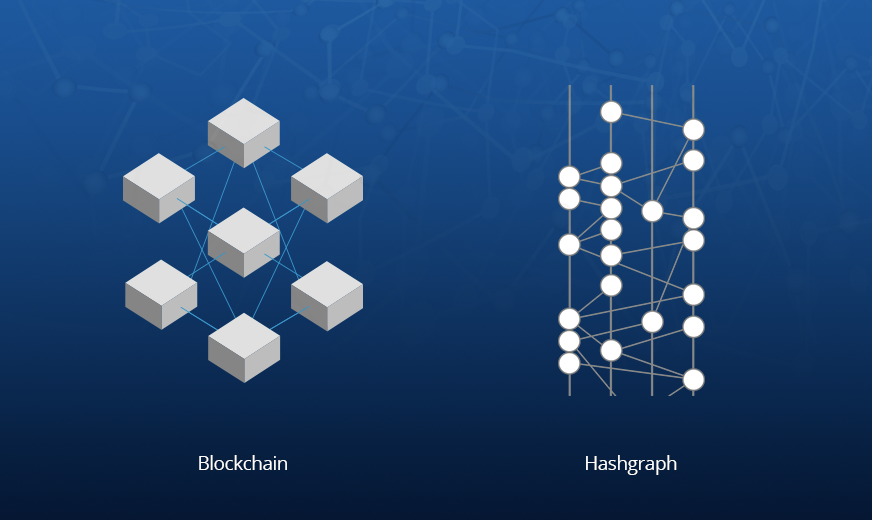Hedera Hashgraph is a distributed ledger technology (DLT) that offers a new way to secure and manage data on a decentralized network. Unlike traditional blockchain technology, which relies on a chain of blocks to store and transmit information, Hedera Hashgraph uses a novel data structure called a hashgraph to create a more efficient and secure network.
The hashgraph is a directed acyclic graph (DAG) data structure that is used to store information about the network’s transactions and state. Each node in the hashgraph represents a transaction, and the edges between the nodes represent the relationships between the transactions.
The hashgraph is designed to be more efficient than a traditional blockchain, as it allows for faster and more secure data transmission and storage. Hedera Hashgraph uses a consensus algorithm called the “gossip protocol” to achieve consensus on the state of the network. This algorithm allows for faster and more secure consensus than traditional blockchain technologies, as it does not rely on a single point of failure or the need for complex mining algorithms. Instead, the network reaches consensus through a decentralized process in which each node in the network shares information about the state of the network with other nodes. One of the key benefits of Hedera Hashgraph is its ability to handle a large number of transactions per second (TPS). The network is currently capable of handling up to 10,000 TPS, which is significantly higher than other blockchain platforms such as Ethereum (20 TPS) or Bitcoin (7 TPS).
The IOTA cryptocurrency uses a directed acyclic graph to store transactions on its ledger.
This high TPS rate makes Hedera Hashgraph well-suited for use cases such as micropayments, online gaming, and other applications requiring fast and secure transaction processing. Another key benefit of Hedera Hashgraph is its security.
The network is designed to be highly resistant to hacking and other forms of attack, as it uses a combination of cryptographic algorithms and other security measures to protect against malicious actors. Additionally, the network is governed by a council of trusted organizations, which helps to ensure that the network is operated in a fair and transparent manner.
Hedera Hashgraph also has several use cases for various industries. For example, in the supply chain industry, Hedera Hashgraph can be used to track the movement of goods and materials in real-time, which can help to improve efficiency and reduce costs.
In the healthcare industry, Hedera Hashgraph can be used to securely store and share medical records, which can help to improve patient care and reduce costs. And in the finance industry, Hedera Hashgraph can be used to securely and efficiently process financial transactions, which can help to reduce costs and improve the customer experience. It also offers various use cases in the supply chain.
How does Hashgraph differ from Blockchain?
Hedera Hashgraph is different from traditional blockchain technology in several ways:
Data Structure: Hedera Hashgraph uses a directed acyclic graph (DAG) data structure called a hashgraph, whereas traditional blockchain technology uses a chain of blocks to store and transmit information. The hashgraph is designed to be more efficient than a traditional blockchain, as it allows for faster and more secure data transmission and storage.
Consensus Algorithm: Hedera Hashgraph uses a consensus algorithm called the “gossip protocol” to achieve consensus on the state of the network, whereas traditional blockchain technology relies on a single point of failure or the need for complex mining algorithms. The gossip protocol allows for faster and more secure consensus as it does not rely on a single point of failure.
Rate of Transaction: Hedera Hashgraph is capable of handling up to 10,000 transactions per second (TPS), which is significantly higher than other blockchain platforms such as Ethereum or Bitcoin. This high TPS rate makes Hedera Hashgraph well-suited for use cases such as micropayments, online gaming, and other applications that require fast and secure transaction processing.
Security: Hedera Hashgraph uses a combination of cryptographic algorithms and other security measures to protect against malicious actors, whereas traditional blockchain technology is vulnerable to hacking and other forms of attack. Additionally, the network is governed by a council of trusted organizations, which helps to ensure that the network is operated in a fair and transparent manner.
Governance: Hedera Hashgraph has a council of trusted organizations that govern the network and makes decisions on the network’s direction and updates, whereas blockchain networks such as Bitcoin and Ethereum are decentralized and governed by their users (nodes).
How can Hedera Hashgraph be used in the supply chain?
Transparency: It allows for real-time tracking of products as they move through the supply chain, improving visibility and accountability.
Traceability: With its immutable ledger, Hedera Hashgraph can provide a complete history of an item’s journey through the supply chain, enabling easy traceability.
Faster Payments: Transactions on Hedera Hashgraph are faster than traditional methods, allowing for more efficient and timely payments in the supply chain.
Record Keeping: With its secure and decentralized ledger, records on Hedera Hashgraph cannot be altered, ensuring the integrity of supply chain data.
Cost-effective: Its low fees and high scalability make it a cost-effective solution for the supply chain management.
In conclusion, Hedera Hashgraph is a promising new technology that offers a number of benefits over traditional blockchain technologies.




